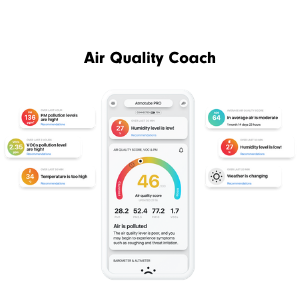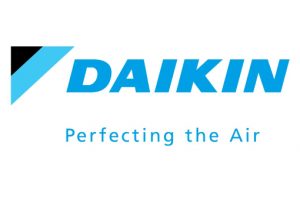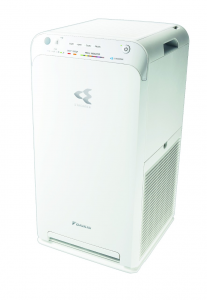Indoor air quality has quickly become a hot topic, previously overlooked for many years, with the Covid-19 pandemic catapulting it into the headlines by highlighting the ease of transmissions whilst working together in offices, factories and other work buildings. This importance is also highlighted by the Government’s slogan of ‘Hands / Face / Space / Ventilate’ and how key fresh air is to that.
What is indoor air quality (IAQ)?
This refers to the air quality within and around buildings and structures that relate to the health and comfort of it’s occupants – your employees.
Air pollutants are as much of a problem indoors as they are outdoors, therefore understanding and controlling common pollutants indoors can help to reduce the risk of indoor health concerns.
Over time building regulations have made buildings and offices more airtight by increasing insulation, making them energy efficient. However, by doing so this has increased the risk for poor indoor air quality and building related illnesses and “Sick Building Syndrome” (SBS).
Sick Building Syndrome can be caused by air pollutants from gasses, such as carbon dioxide (COշ) that is caused by exhalation and general combustion of appliances (gas hobs, boilers etc), and volatile organic compounds (VOCs), which can come from lacquers, varnishes, paints, printing machines, cleaning fluids, hair spray – essentially most things that are contained within buildings, including from the people within them and what they do.
Unfortunately Sick Building Syndrome has been estimated to cost the British economy 24.6 million lost working days every year.
Leading scientists and mechanical engineers from bodies such as ‘CIBSE’ and ‘ASHRAE’ continue their quest to raise the importance and awareness of fresh air dilution in its ability to prevent transmission rates and help prevent Sick Building Syndrome.
Why is indoor air quality so important?
A YouGov survey, commissioned by the Building Engineering Services Association (BESA) in 2016, revealed that almost 70% of office workers believed poor air quality in their workplace was having a negative impact on their day-to-day productivity and well-being
Employee health
Poor indoor air quality may cause odours or irritability, it may aggravate symptoms such as allergies and asthma, airborne respiratory infections, chronic obstructive pulmonary disease, cardiovascular disease and lung cancer (IAQ Indoor Air Quality Guidelines for selected VOCs). The effects caused can be far reaching and diverse and of course can depend on an individual’s pre-existing health conditions. The effects can be seen immediately or can have long term impacts.
Productivity
Not only can employees’ health lead to lost days at work by suffering from poor indoor air quality, but it can also have an adverse effect on those employees still within the office – either by spreading illnesses around within poorly ventilated buildings, and/or through a decrease of cognitive function and performance.
For employees to have high performing cognitive abilities they need good quality ventilation systems in place to ensure low levels of indoor pollutants and carbon dioxide.
A study carried out by Harvard T.H. Chan School of Public Health’s Center for Health and the Global Environment, SUNY Upstate Medical University, and Syracuse University, looked at office workers who were exposed to various concentrations of indoor pollutants and carbon dioxide (COշ) in simulated building conditions that included conventional conditions, with relatively high concentrations of volatile organic compounds (VOCs), and those of greener conditions with low concentrations of VOCs. .
It’s not surprising that striking differences were found in cognitive performance, such as problem-solving, decision making and strategy, across these different environments. Overall cognitive performance scores increased as much as 100% in the greener conditions with less VOCs, compared to the conventional environment.
As a general guide carbon dioxide (COշ) levels for a healthy good working environment should be around 400 to 1000 parts per million (PPM), below shows what may happen if this level is not controlled:
| 400 to 1000PPM | Recommended for good concentration levels |
| 1000 to 2000PPM | Occupants may start to feel and complain of drowsiness and lack of concentration |
| 2000 to 5000 PPM | Occupants may start to feel and complain of headaches, sleepiness, very poor or total loss of concentration |
Air of authority – legislation and guidance
Whilst there is much guidance within the UK on indoor air quality, currently there are no regulations on the overall quality of indoor air quality, to the frustration of many industry bodies.
The only legislation is for modern buildings and is found in part F of the building regulation, which states to provide indoor occupants with 10 litres of fresh, tempered air per person, per second (10l/P/S) for a healthy, stable environment. However, for older buildings this is not the case and quite often the only option is to open windows.
Below are several sources of guidance from industry bodies and agencies around the subject of indoor air quality:
- The Health, Safety and Welfare Regulations 1992 (HMSO, 1992) covers a basic requirement for sufficient ventilation
- The EU have provided Air Quality Standards
- The Committee on Medical Effects of Air Pollutants (COMEAP) have produced a Daily Air Quality Index (DAQI) which tells you about levels of air pollution
- The Health and Safety Executive provides guidance on indoor ventilation
- A beginner’s guide to Indoor Air Quality (non-technical) by BESA
What you and your business can do
Employers need to be increasingly aware of the need to ensure their staff have the best possible air quality when they start to return to work in the office. Indoor air quality needs an ongoing focus and to be taken seriously.
Some examples of what you can do include:
- Test your indoor air quality to see what is really happening – we can provide you with a device that does just that – the Atmotube Pro Indoor Air Quality monitor for only £179.99 + VAT each. These handy, portable devices monitor the quality and safety of the air you breathe, and come with a mobile app that displays all the information you need. Contact us on 01522 788799 for further details.


- For small spaces with low numbers of people, buying in some air purifying plants can help, such as Aloe Vera, Spider plants and Rubber plants.


- Open windows and let fresh air in – however, whilst not every building offers the ability to open their windows, there is also a consideration of cold drafts, or the heating costs for heating that lost warm air.
- Buy in air purifiers – these essentially work by sanitising the air, which may include pollutants, allergens, and toxins. We can provide you with the Daikin MC55VB Air Purifier with Streamer technology, which inactivates more than 99.9% of the novel Coronavirus (SARS-CoV-2) after three hours. Only £350 + VAT, plus £15 for delivery. Contact us on 01522 788799 for further details.


- Alternatively, the most sensible and viable option, especially for businesses with more than a few employees, is to look at ventilation systems – these could start with simple ‘supply’ and ‘extract’ fans that have heater batteries. Or, to be able to save all the heat and evenly distribute it within the building, utilising a heat recovery ventilation system would be an ideal option. These not only provide a stable environment for your employees but are also very cost efficient at achieving this.
What Lynx AC can do to help your business
Lynx AC has been providing all types of ventilation systems including fresh air introduction, extraction and heat recovery, for many years to offices, factories and public spaces such as fitness centres, hospitals, schools and homes. Ventilation is used for introducing outdoor air into offices, homes and other indoor spaces, to control the air quality by diluting and displacing indoor pollutants, to control temperature, humidity, and air motion.
We are passionate about providing safe, quality ventilation products and solutions to the many businesses and domestic customers we work with.


